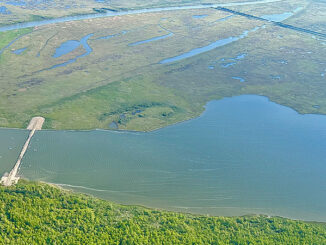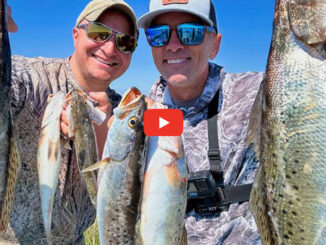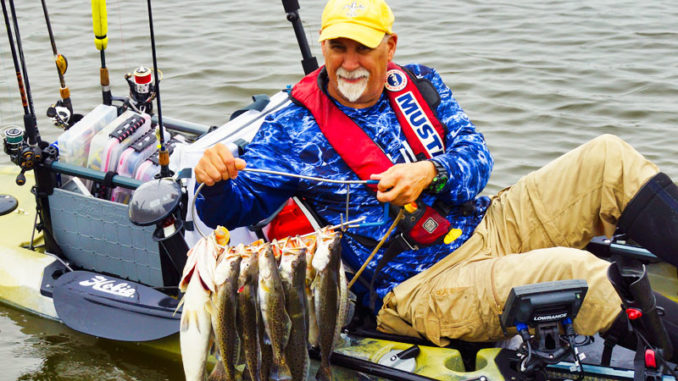
An often-overlooked but highly successful technique for catching trout from a kayak is trolling. Sure, some folks slow-troll in the winter, but if you don’t try this fish-catching magic at this time of the year, you are missing out.
While pedal kayaks make trolling much easier, it can also be done while paddling. To make things easier, a little rigging should be employed. Set up two adjustable rod holders on each side of the cockpit, within easy reach while in your normal, sitting position. Rod holders that adjust forward and back as well as up and down allow you to get the rods in just the correct position to get your trolled lures to run where and how deep you want. Having the reels in easy reach lets you react much faster when a strike occurs.
Limit your lines
Yes, it is possible to troll more than two lines at once, but it is almost certain to end in disaster. Two lines are more manageable and efficient.
With the days heating up and trout leaving the interior marshes on their way towards the outside, you can often intercept them in deeper canals and bayous. A depth finder is invaluable for finding fish and getting a look at the water depths and bottom contours.
Placing your rods in a more horizontal position spreads the lures and helps to avoid tangles. The more line you let out allows the lures to run deeper. This will have to be adjusted to match current conditions and there really is no set formula. However, try to make note of how much line you let out or how far back you cast so that it can reasonably be repeated when you catch a fish and need to get your lines back out.
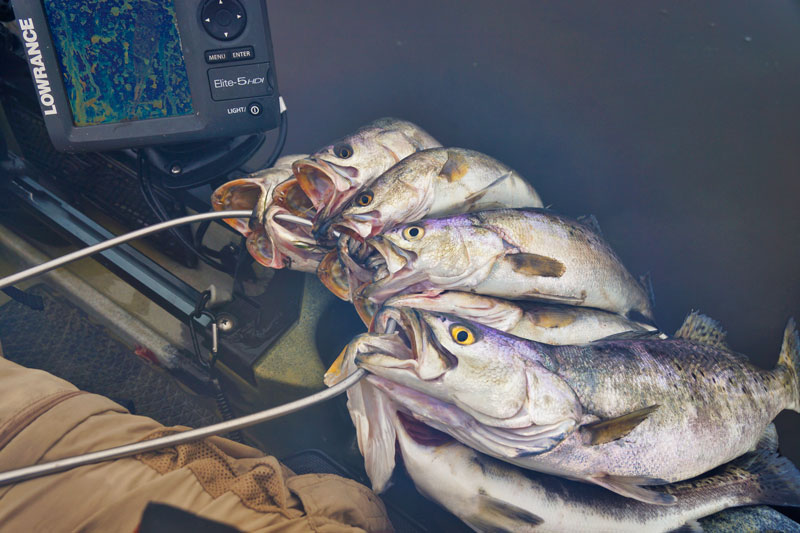
Keep steady pace
Try to keep a steady pace so the lures lures stay at a speed between 1.5 and 2.0 miles per hour. This is pretty much normal traveling speed and will be easy to maintain. This is another way a depth finder with GPS comes in handy, as your speed is visible on the screen. Strikes are usually aggressive, and the rod will bend or jerk when a trout hits. Don’t immediately grab for the rod. When the strike occurs, give a couple of quick pedals or paddle strokes, to help set the hook before grabbing the rod.
Proven producers
Almost any lure you can cast and retrieve makes a good trolling bait, but there are a few that are proven producers. The H&H Usual Suspect is an internally weighted, soft-plastic swimbait that works great when trolled. It has a paddletail that gives off constant visitation, and the flat bottom keeps it upright when trolled. While it is great trolled as a single bait, it is even more effective when tied as a double rig. If a fish strikes, wait an extra few seconds before reeling, and you’ll often get a double hook-up.
There are a couple baits that aren’t designed for trolling but work exceptionally well. The Rapala Shadow Rap, Shadow Rap Shad and the RipStop are all stickbaits with a small lip and lots of flash. They swim with a nice vibration and run upright when trolled at moderate speeds. The Shadow Rap is a suspending bait with a slow sink rate, and the Shadow Rap Shad rises when stopped. The RipStop is great for trolling with one rod in your hand to impart extra action. Pulling the bait with a slow, forward sweep of the rod and then a quick stop gives it an erratic action and flash that draws vicious strikes. Old favorites like Rat-L-Traps, Sparkle Beetles and Gulp curlytails are also deadly trolling lures.
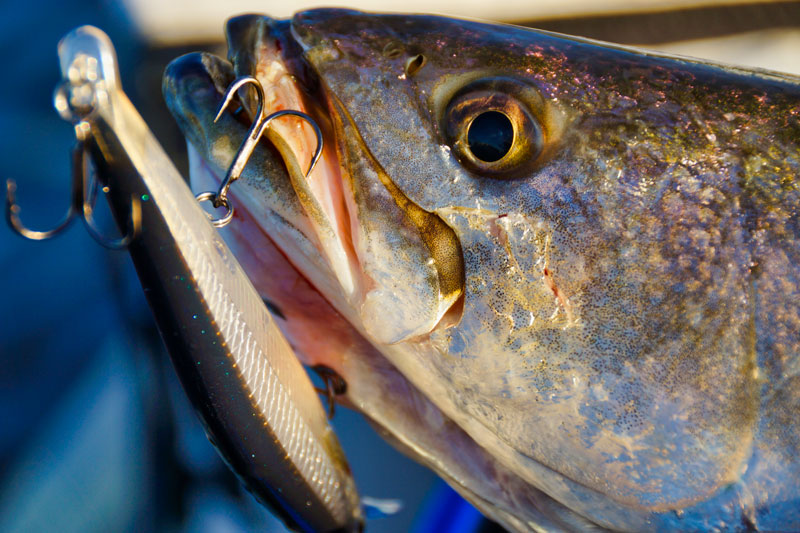
Vary amount of line
Start off varying the amount of line you let out so that your baits are running at different depths. Try different style lures and different colors on each rod. Once you see which is working best, you can run the same lures on both rods.
Trolling lures with exposed hooks, especially treble hooks. can be difficult in areas with lots of grass. Just a tiny amount of grass on your lure affects the action and almost never gets a strike. Often you’ll notice a difference in the vibration of your rod tip, but it is a good practice to reel your lines in every few minutes to check them if you are not getting any action. To help with trolling in grassy areas, try using an in-line spinner with the hook imbedded in the soft-plastic tail or a weedless silver spoon. Make sure to attach a swivel to your spoon to avoid line twist.
Trolling is a simple and effective method for catching trout from a kayak. Using nothing more than your normal pedaling/paddling speed and a couple of rods sitting in a rod holder can get the job done. Also, if you’re out for a topwater or popping cork day, consider trolling your way from spot to spot. If you have a lure in the water, you have a chance of getting bit.
